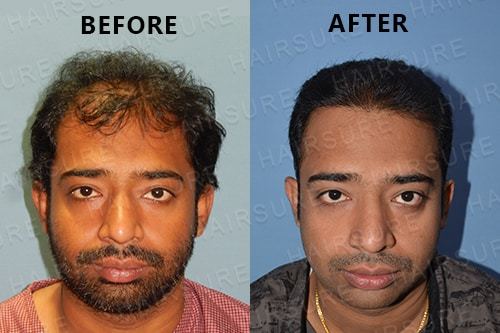#confidenthair
Text
The Pros and Cons of Synthetic Hair Transplant: Is it Right for You?

Hair loss and balding can be a significant concern for many people, leading them to explore different solutions. One of the newest hair restoration technologies is Synthetic Hair Transplant. In this blog post, we'll discuss the pros and cons of this method to help you determine if it's the right choice for you.
What is Synthetic Hair Transplant?
Synthetic Hair Transplant is a non-surgical hair restoration technique that uses synthetic fibers to give the appearance of fuller hair. The fibers are attached to your existing hair using special adhesives, creating a more voluminous look.
Pros of Synthetic Hair Transplant:
Non-invasive: Unlike surgical hair transplant procedures, Synthetic Hair Transplant doesn't require any incisions or stitches.
Immediate results: You'll see the results of your Synthetic Hair Transplant right away, without having to wait for recovery time.
No downtime: You can resume your regular activities immediately after the procedure, as there's no downtime required.
Cons of Synthetic Hair Transplant:
Not permanent: Synthetic Hair Transplant is not a long-term solution, and the fibers will need to be reapplied regularly.
May be noticeable: If the synthetic fibers don't match your natural hair color or texture, they may be noticeable.
Pros & Cons of Synthetic Hair Transplant:
Pros Cons Non-invasive Not permanent Immediate results May be noticeable No downtime
Is Synthetic Hair Transplant Right for You? Synthetic Hair Transplant may be a suitable solution if you're looking for a non-invasive, immediate answer to hair loss or balding. However, it's important to weigh the pros and cons and consider if the benefits outweigh the drawbacks for you.
Conclusion: Synthetic Hair Transplant is a new hair restoration technique that provides immediate results without the need for surgery. While it may not be a permanent solution, it can be a good option for those looking for a quick fix to hair loss or balding. As with any medical procedure, it's important to consult with a specialist to determine if Synthetic Hair Transplant is right for you.
#SyntheticHairTransplant#NonSurgicalHairRestoration#HairLossSolution#BaldingSolution#HairTransplantAlternative#SyntheticHairFibers#FullerHair#InstantResults#HairThickness#HairLoss#ThickerHair#HealthyHair#HairCare#HairGoals#HairTransformation#ConfidentHair#hair transplant#hair clinic in delhi
0 notes
Text
The Ultimate Guide to Hair Weaving: Benefits, Types, and Maintenance.
Introduction to hair weaving:
Hair weaving is a popular hair extension method that involves adding additional hair to your natural hair. It can be used to add length, volume, or both to your natural hair, and it allows for a lot of versatility in styling. There are several different types of hair weaving, each with its own set of benefits and drawbacks. In this guide, we'll explore the different types of hair weaving, the benefits of hair weaving, and how to maintain your hair weave.

Benefits of hair weaving:
There are several benefits to hair weaving:
Adds volume and length to natural hair: One of the most obvious benefits of hair weaving is that it allows you to add volume and length to your natural hair. This can be especially helpful if you have thin or short hair, or if you just want to try out a new look.
Low maintenance: Hair weaving is relatively low maintenance compared to other hair extension methods. Once it is installed, you don't need to do much to maintain it.
Versatility in styling: With hair weaving, you have a lot of flexibility in terms of styling. You can wear your hair in a variety of styles, including braids, ponytails, and up-dos.
Can protect natural hair: If you have damaged or brittle hair, hair weaving can provide a protective layer over your natural hair. This can help to prevent further damage and allow your natural hair to grow and repair itself.

Types of hair weaving:
There are several different types of hair weaving, including:
Sew-in weave: A sew-in weave involves braiding your natural hair into cornrows and then sewing the hair extension tracks onto the braids. This is a popular method because it is relatively easy to install and provides a natural-looking result.
Bonded weave: A bonded weave involves attaching the hair extensions to your natural hair using a bonding agent, such as glue or a special tape. This method is quick and easy, but it can be more damaging to your natural hair than other methods.
Lace front weave: A lace front weave involves attaching a lace cap to your hairline and then sewing or gluing the hair extensions to the cap. This method creates a natural-looking hairline, but it can be time-consuming to install.
Clip-in weave: A clip-in weave involves attaching the hair extensions to your natural hair using clips. This is a temporary method that is easy to install and remove, but it may not be as secure as other methods.
#hairtransplant#onlineconsultation#telemedicine#expertadvice#qualifiedsurgeon#convenientcare#hairrestoration#hairlosssolution#hairgoals#confidenthair#drshaiil#fue#fut#MHT#hair transplant#hair clinic in delhi#hair clinic near me#fuehairtransplant#youtube#hair problems#hair
0 notes